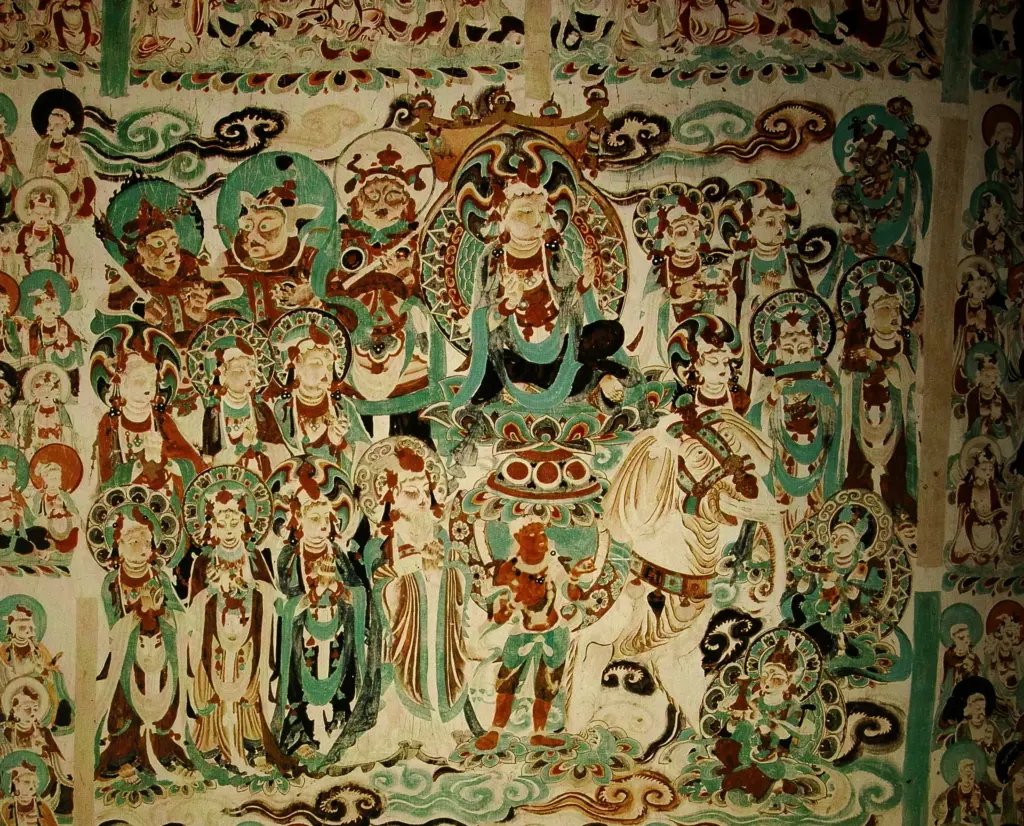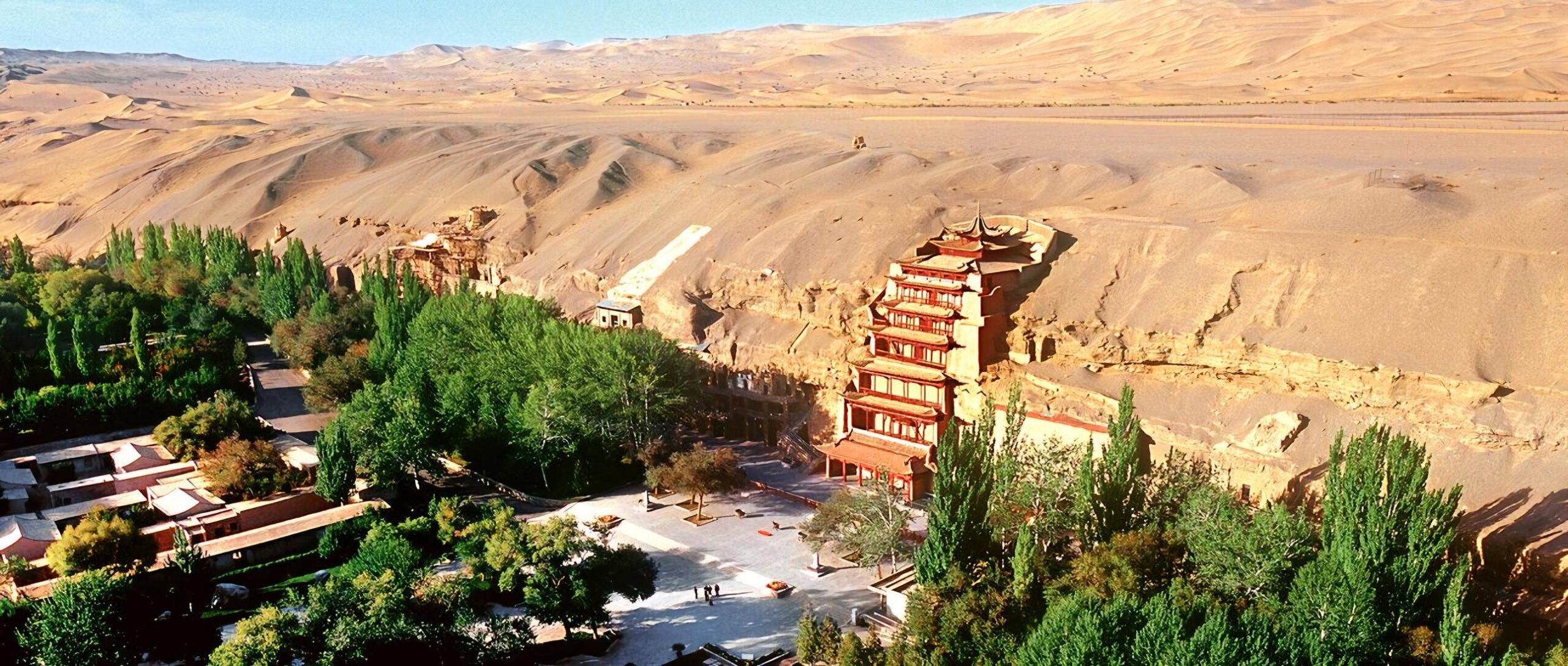Introduction
In the heart of China’s Gansu Province, where the vast Gobi Desert meets the echoes of the ancient Silk Road, lies Dunhuang—a city steeped in mysticism and cultural grandeur. Its crown jewel, the Mogao Caves (also known as the Thousand Buddha Grottoes), is a UNESCO World Heritage Site that has captivated travelers, scholars, and pilgrims for over a millennium. Step into a world where Buddhist devotion, artistic brilliance, and the whispers of history intertwine.
A Glimpse into History
Carved into a cliff face along the Daquan River, the Mogao Caves began as a spiritual sanctuary in 366 AD. Legend says a wandering monk, inspired by a divine vision of golden light, started the first cave. Over the next 1,000 years, dynasties from the Northern Wei to the Yuan expanded this sacred complex into a labyrinth of 492 caves, housing 45,000 square meters of murals and 2,000 painted sculptures.
These caves served as a spiritual oasis for Silk Road travelers, offering solace and hope amidst perilous desert journeys. Today, they stand as one of the world’s most extensive and well-preserved collections of Buddhist art—a testament to the cultural exchange between China, India, Persia, and beyond.
Breathtaking Beauty: Art and Nature
1. The Murals: A Kaleidoscope of Color
The Mogao Caves are a canvas of storytelling. Vibrant murals depict celestial beings (apsaras) dancing across lotus-filled heavens, scenes from the Buddha’s life, and snapshots of Silk Road life—merchants, musicians, and monks frozen in time. The pigments, derived from minerals and plants, still radiate brilliance after centuries.
2. Sculptures: Divine Craftsmanship
From serene Buddha statues to intricate Bodhisattvas, the sculptures blend Indian Gandhara influences with Chinese aesthetics. The towering 35-meter-tall Maitreya Buddha in Cave 96 inspires awe, while smaller figures exude delicate grace.
3. Desert Majesty
Surrounding the caves, the stark beauty of the Gobi Desert enchants. Climb the Echoing Sand Mountain (Mingsha Shan) at sunset, where shifting dunes “sing” in the wind, or visit the crescent-shaped oasis of Crescent Lake (Yueyaquan)—a miracle of nature amid the arid landscape.
Buddhism: The Soul of the Mogao Caves
The Mogao Caves are not just art—they are a living chronicle of Buddhism’s journey along the Silk Road. The caves reflect doctrinal shifts, from early Theravada teachings to the rise of Mahayana philosophy. Devotional inscriptions, sutra manuscripts (including the famed Diamond Sutra), and meditation cells reveal the spiritual fervor of ancient monks.
Highlights for Spiritual Seekers:
- Cave 17 (The Library Cave): Discovered in 1900, this sealed chamber held over 50,000 manuscripts, paintings, and textiles—an archaeological sensation that reshaped our understanding of Buddhist history.
- Cave 257: Admire the vivid “Jataka Tales,” illustrating the Buddha’s past lives as a selfless prince or a compassionate deer.
Practical Tips for Visitors
- Best Time to Visit: April–October (avoid summer midday heat).
- Tickets: Book guided tours in advance (public access is limited to protect the caves).
- Etiquette: No photography inside caves; respect the sacred atmosphere.
- Combine With: Attend the annual Dunhuang Cultural Tourism Festival or explore the Dunhuang Museum to deepen your understanding.
Conclusion
The Mogao Caves are more than a destination—they are a pilgrimage through time. Here, the silence of the desert harmonizes with the spiritual echoes of chants and brushes that once filled these grottoes. Whether you’re an art lover, history buff, or soul-seeker, Dunhuang’s Mogao Caves promise an unforgettable journey into the heart of humanity’s shared heritage.
Plan Your Journey:
🌅 “In the desert, you find the soul of the world.” — Let Dunhuang reveal yours.
🌏 Have you visited Dunhuang or other Silk Road wonders? Share your stories below!

